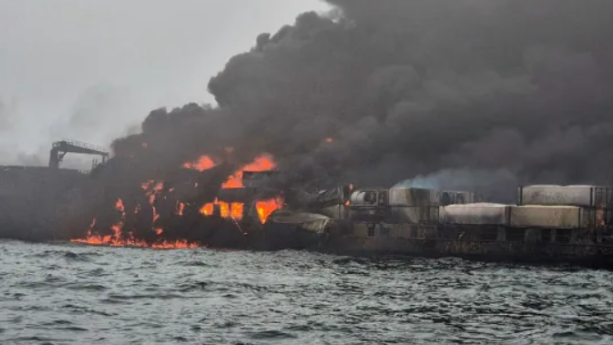Nearly 1,600 Accidents in 10 Years: Alarming Fire Risks in Port Equipment
Logistics News
![]() 11-Mar-2025
11-Mar-2025
Global port safety is sounding the alarm! The latest analysis from TT Club, an international freight and cargo handling insurance company, reveals that fire has become one of the leading causes of port equipment losses, accounting for 20% of all accident-related losses. This not only poses a serious threat to port operations but also directly endangers the safety of workers and end-users.
TT Club's claims data indicates that over the past 10 years, there have been nearly 1,600 fire incidents involving port equipment, with 19% of these incidents related to port equipment. This proportion has remained relatively stable over the past decade.
Neil Dalus from TT Club's Loss Prevention Department pointed out:
"Fires not only lead to significant insurance losses and operational disruptions but also pose a major threat to the safety of port workers, visitors, and even the general public. Fire detection and suppression systems should be regarded as core safety measures for port equipment!"
Three Major Risks of Port Equipment Fires:
- Increased Fire Risks in Aging Equipment: As port equipment ages, issues such as aging wiring, fuel leaks, and mechanical friction have led to frequent fire incidents.
- Fire Hazards in New Energy Equipment: With the acceleration of port electrification and automation, the use of lithium batteries and hybrid equipment has increased, bringing with it a rise in fire risks.
- Inadequate Maintenance and Outdated Safety Systems: Some ports underinvest in equipment maintenance and lack regular inspections, resulting in malfunctioning fire suppression systems and increased fire risks.
The latest white paper from the Port Equipment Manufacturers Association (PEMA), titled Fire Detection and Suppression Systems for Mobile Port Equipment, highlights that the key to fire prevention lies in:
- Regular Maintenance: Fire detection systems and fire suppression equipment must strictly adhere to manufacturer service agreements and undergo regular inspections.
- Compliant Operations: Port operators must comply with industry safety standards to ensure all equipment meets mandatory regulatory requirements.
- Remote Monitoring: For automated and unmanned equipment, it is recommended to install remote monitoring systems to provide early warnings of fire hazards.
- Industry Collaboration: Port operators need to work closely with fire suppression system suppliers and equipment manufacturers to jointly develop fire prevention strategies and reduce fire risks.
TT Club and PEMA jointly call for all ports to install state-of-the-art fire suppression systems and strictly adhere to equipment maintenance protocols!
"In the future, close collaboration among fire suppression system suppliers, equipment manufacturers, and port operators will be key to reducing port fire incidents!"
Currently, as global port equipment moves toward electrification and intelligence, fire hazards are increasing. Port operators must control risks at the source to ensure the stable operation of the global supply chain!

Last
Container Ship Collides with US Military Oil Tanker, Flames Light Up the Sky
On March 10, local time, a severe ship collision occurred in the North Sea off the coast of East Yorkshire, England. A US-flagged
Next
今年前两个月,我国货物贸易进出口总值6.54万亿元,其中出口规模创历史同期新高,我国外贸开局总体平稳。据海关统计,2025年前两个月,我国货物贸易(下同)进出口总值6.54万亿元人民币,同比(下同)下降1.2%(与去年同期相比,今年前两个月少了2个工作日,剔除
